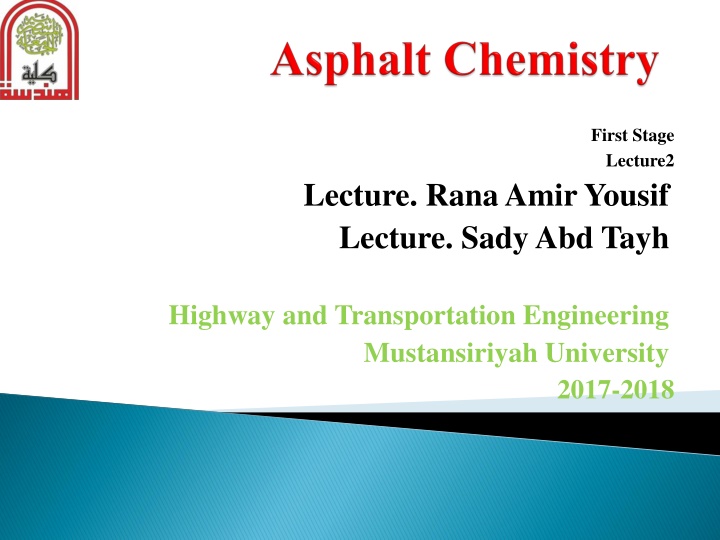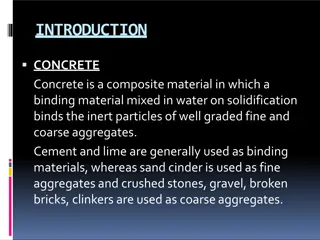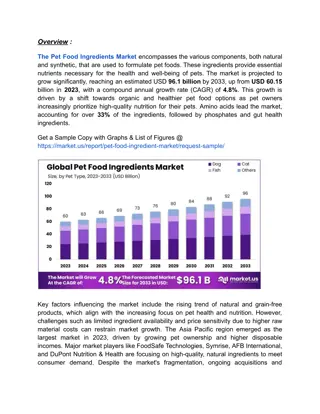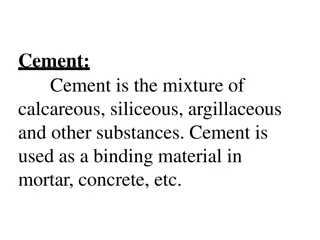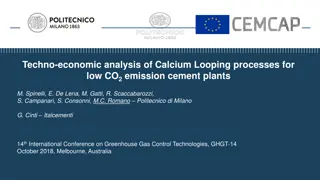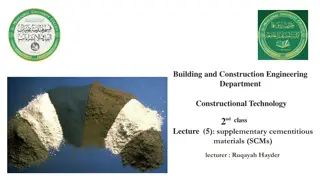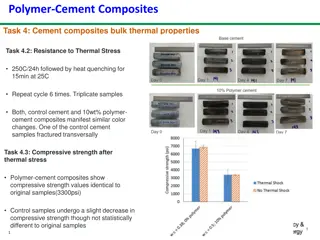Cement Ingredients and Their Functions
Lime, silica, alumina, magnesia, iron oxide, calcium sulfate, and sulfur trioxide are essential ingredients in cement production. Each ingredient plays a crucial role in determining the strength, setting properties, and durability of the final cement product. Understanding the functions and effects of these ingredients is vital for producing high-quality cement.
Download Presentation

Please find below an Image/Link to download the presentation.
The content on the website is provided AS IS for your information and personal use only. It may not be sold, licensed, or shared on other websites without obtaining consent from the author.If you encounter any issues during the download, it is possible that the publisher has removed the file from their server.
You are allowed to download the files provided on this website for personal or commercial use, subject to the condition that they are used lawfully. All files are the property of their respective owners.
The content on the website is provided AS IS for your information and personal use only. It may not be sold, licensed, or shared on other websites without obtaining consent from the author.
E N D
Presentation Transcript
First Stage Lecture2 Lecture. Rana Amir Yousif Lecture. SadyAbd Tayh Highway and Transportation Engineering Mustansiriyah University 2017-2018
References: Edwin J. Barth. Asphalt Science and Technology , 1st Ed. ,1962. James Speight Asphalt Materials Science and Technology , 1st Edition 2015.
Chemical Nature of Asphalt Predominately hydrocarbon Carbon 82-88% Hydrogen 8-11% Sulfur 0-6% Oxygen 0-1.5% Nitrogen 0-1% Trace amounts of metals Ni, Fe, V, Mg, Ca Acid value 0-4.5 mg KOH/g High MW (Molecular Weight) naphthenic acids Small base value Nitrogen compounds Nitrogen compounds Salt SARA fractions
Some Structural Modelsfor Asphalt Pfeiffer and Saal (1940): Asphalts are visualized as colloidal system, with asphaltenes forming the centers of micelle and having a more pronounced aromatic nature, the asphaltenes were assumed to be surrounded by lighter constituents of less aromatic nature, and there were no distinct interphases between the micelles and the medium surrounding it
solvent precipitation, chemical precipitation, adsorption liquid chromatography, ion exchange liquid chromatography, coordination liquid chromatography, thin-layer chromatography, gas-liquid chromatography, size-exclusion chromatography, high pressure gel permeation chromatography, vapor pressure osmometry, mass spectrometry, electrophotometric spectroscopy, nuclear magnetic resonance spectroscopy, electron spin resonance spectroscopy, spectrochemical analysis, elemental analysis, distillation fractionation, wax content determination, photochemical reactions of asphalt, acid number determination, internal dispersion stability, titrimetric/gravimetric analysis . .
a) Relating in General to Bituminous Materials: Bitumens: Mixtures pyrogenous origin, or combination of both, frequently accompanied by their nonmetallic derivatives, which may be gaseous, liquid, semisolid, or solid, and which are completely soluble in carbon disulfide. b) Relating Specifically to Petroleum Asphalts: of hydrocarbons of natural or Asphalt: A dark brown to black cementitious materials, solid or semisolid in consistency, in which the predominating constituents are bitumens which occur in nature as such, or are obtained as residue by refining petroleum.
Asphalt is found in widely scattered parts of the world in one or another of the following forms: a) Laid down in geologic strata and occurring both as soft bituminous material and also as hard, friable, black bitumen in veins of rock formations, or impregnating various limestones, sandstone formations, and the like. The soft bituminous material, almost like heavy petroleum, is typified in the Trinidad Lake deposit on the Island of Trinidad, in Bermudez Lake, Venezuela, and in the extensive "tar sands" area near LakeAthabasce, Canada. b) Colloidally dispersed asphalt petroleum (petroleum asphalts). hydrocarbons in crude
